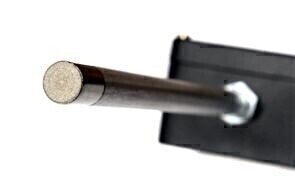Gas Detection
Maximise Efficiency, Minimise Emissions with Zirconia Oxygen Sensors
Mar 31 2015
Fire: a basic requirement for the survival of our species. To make fire, all you need is a source of fuel, an ignition source and some oxygen. And there you have it, a very inefficient fire producing a great deal of smoke and wasting most of the available of heat. This may be very pleasant around the camp-fire but it’s far from ideal in the home!
We now live in a world where resources are dwindling. Put simply, there are fewer things left for us to burn. We are also, quite rightly, concerned about what we are putting back into the atmosphere so we have to be careful how we burn the fuel we have left.
Bioenergy is certainly one of the answers but, just because it is a “renewable” energy source, that does not mean we can afford to be wasteful with it. For example, in order to maximise return on investment in the installation of a new biomass boiler, running costs need to be kept to a minimum.
Clearly, the design of the boiler will have a considerable effect not only on combustion efficiency but will also help minimise emissions. However, the best way to achieve both of these goals: squeeze the greatest amount of energy from any fuel, while keeping harmful emissions to an absolute minimum, is by monitoring the flue gases and controlling the combustion process accordingly.
Many manufacturers of biomass heating equipment have discovered the benefit of using oxygen sensors to optimise the process of burning bio-fuel. That is not only good for the environment but also for the end-user’s pocket.
Zirconium Dioxide (ZrO2) sensors are the most common type of sensor used in the field. SST Sensing designs and manufactures a unique type of ZrO2 sensor. This is a dynamic oxygen cell product and it is rapidly gaining popularity in the field. Modified lambda sensors, (originally developed for the automotive market) are another type of sensor which has been used in this field.
Used in a variety of applications, Zirconium Dioxide Oxygen Sensors are a product of choice where: Reliability and accuracy are required, Robustness in harsh environments is essential, Calibration, if necessary, is easily performed, Resistance to carbon deposits and other pollutants is vital, Increasing efficiency and minimising emissions is fundamental.
SST Sensing’s (UK) range of fail-safe sensors meets all of the above requirements with ease. They are accurate to within a fraction of a percent of reading, robust and reliable enough that they have been used for many years on aircraft and are extremely easy to calibrate when necessary. The fully porous, stainless steel cap allows a free flow of the flue gases to reach the sensor, while trapping any soot or debris which might lead to sensor malfunction. Unlike other types of sensors, which can quickly become inaccurate as this build-up occurs, SST’s sensors will last for years even in badly regulated combustion processes before the dirt and pollution has any effect.
Digital Edition
IET 34.2 March 2024
April 2024
Gas Detection - Biogas batch fermentation system for laboratory use with automatic gas analysis in real time Water/Wastewater - Upcycling sensors for sustainable nature management - Prist...
View all digital editions
Events
Apr 30 2024 Melbourne, Australia
Apr 30 2024 Birmingham, UK
May 03 2024 Seoul, South Korea
May 05 2024 Seville, Spain
May 06 2024 Minneapolis, MN, USA


















